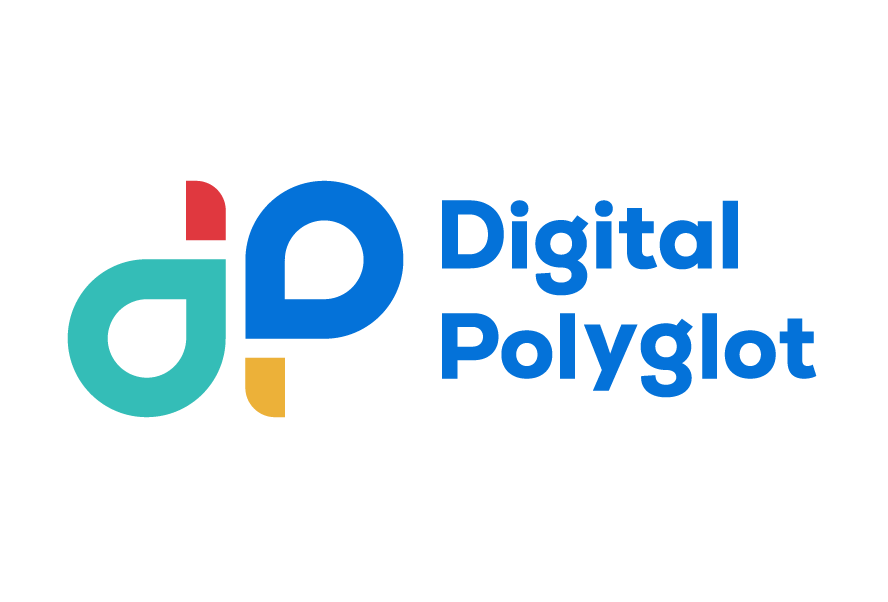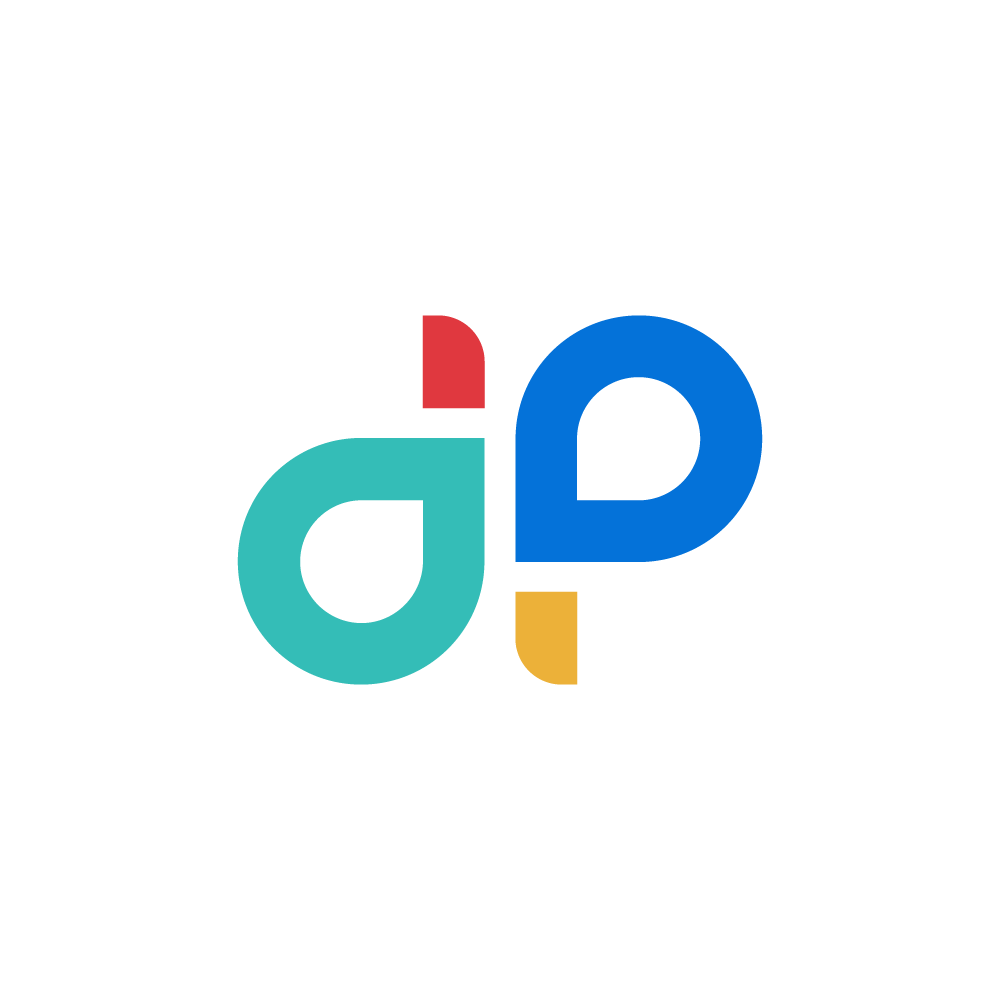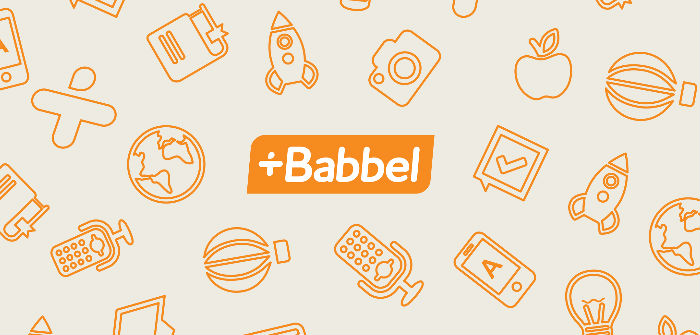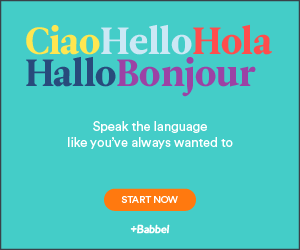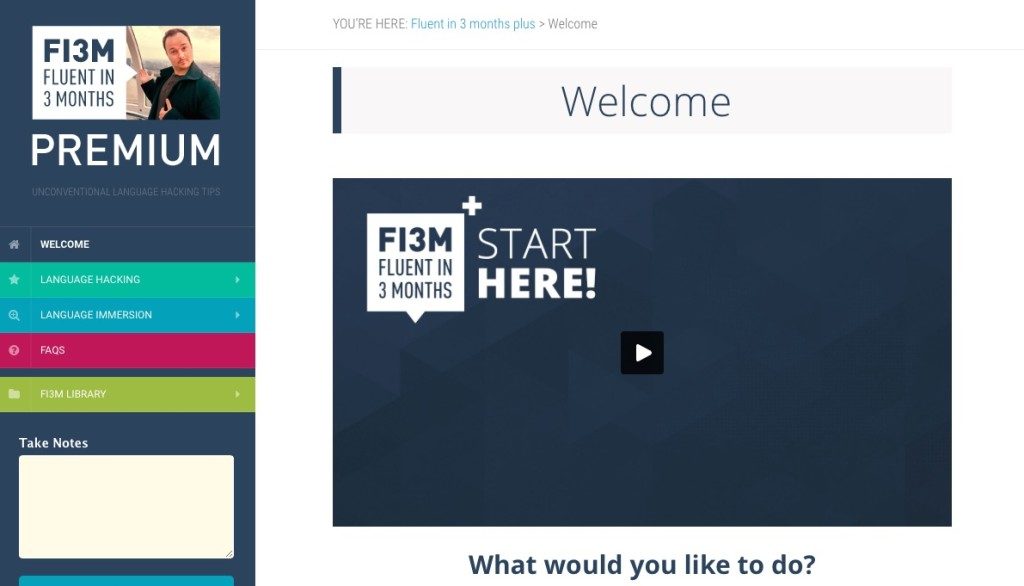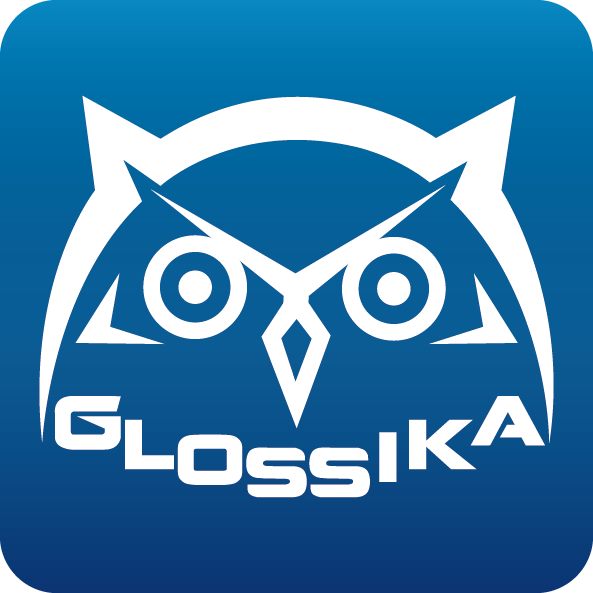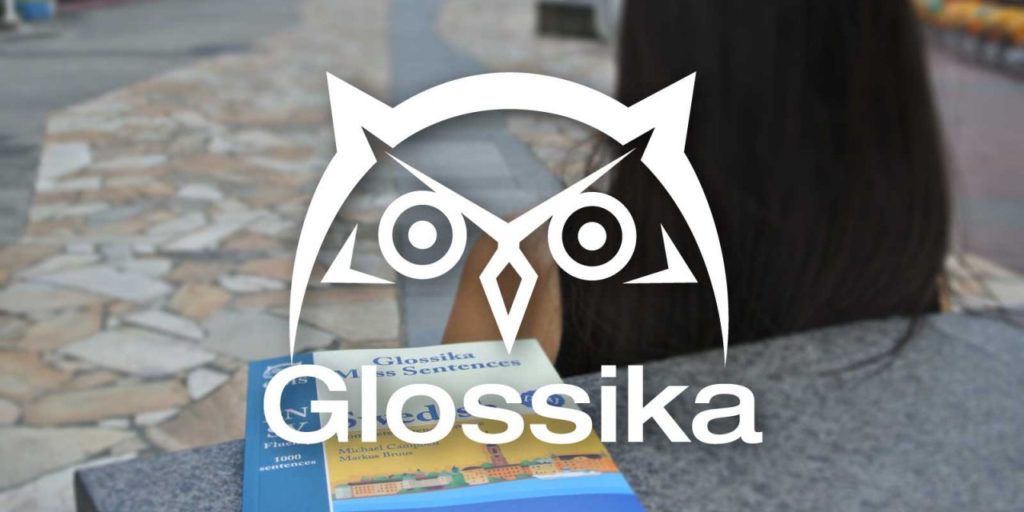
How online education is changing language learning’s game
Online language learning: A new era has just begun
Online education has gained enormous relevance during the last decade and more and more people are leaning towards this more flexible style of learning.
Let’s find out what has happened!
Well, if you have ever been enrolled in a regular course of language learning -That is to say, a course taught to a group of students in a classroom accompanied by a textbook.- You may already know the answer.
Conventional learning is not pleasant for everyone and certainly isn’t the most effective method when it comes to learn and improve a language.
———
“Everybody is a genius. But if you judge a fish by its ability to climb a tree, it will live its whole life believing that it is stupid”. -Albert Einstein
———
Why is it so?
In my experience, conventional learning is a fairly basic teaching technique and I could even call it vague. Just ask yourself this question, what is the easiest way to get a group of people to learn something? Well, standardize the level of learning so that all group members learn more or less at the same pace.
That’s in theory, but …
We all have different skills, the same happens with #LanguageLearning. We are all great in some way. https://t.co/p30Y7eZQZf 🤔🎖 #Education pic.twitter.com/cORxB19rqK
— Digital Polyglot (@hellopolyglot) 12 de noviembre de 2016
The problem is that this standard is usually static, meaning that it never feeds back from the characteristics of the group to which it is directed, causing it to be boring to some, too challenging for others but demotivating for most.
This happens mostly when the basic level has already been surpassed in any language.
It is at this point where we basically have two options:
A) Quit: With resignation, accept that we’ll never have the linguistic repertoire of Colonel Hans Landa and dedicate ourselves to do something else.
B) Fight: Analyze the situation and find an alternative way to get where we want.
What is that way then?
Well, I think you already know, all the resources you need can be obtained from the same place that brought to the world the Nyan cat, the Mannequin Challenge and all the memes with which you usually waste your time: The internet.
Ehm.. Ahh… Me no speako English! 😂 #Polyglot #Languages pic.twitter.com/vFz9cXqYY5
— Digital Polyglot (@hellopolyglot) 14 de marzo de 2017
Hahaha, you know it’s true; but let’s get serious:
On the internet, there are literally thousands of online language learning resources you can use to undertake this adventure.
However, it is very important for you to know that:
Because online language learning is much freer than conventional methods, it is very easy to succumb to procrastination if you lack sufficient discipline. You must be able to motivate yourself to keep the commitment to the program you choose.
You might be wondering…
So, What can I do to succeed?
Well, there are many time management tools that you can use to accomplish this adventure. One of our favorites is Trello -which we ourselves at Digital Polyglot use-. This tool provides deadlines and to-do lists for an orderly and constant learning.
Being able to interact with millions of people trying to learn the same way as you, can also be very helpful to keep your goal in sight.
Now, this is the best of online language learning:
The main advantage is the variety of existing techniques that can help you achieve the mastery you seek. You can choose a program according to your level, experience, lifestyle or way to learn. Besides, some of these programs focus on improving a specific aspect of the language; from the most basic like grammar and vocabulary to the most advanced like pronunciation and accent.
Now, that’s success in learning a foreign language… Kudos! 👏✨😀 #LanguageLearning #Polyglot pic.twitter.com/t79kZFfvRe
— Digital Polyglot (@hellopolyglot) 14 de marzo de 2017
At Digital Polyglot we know that a number of online language learning offers in the network can be overwhelming and that this might represent a problem for some of you.
But don’t worry, Look what we’ve got for you!
Our crew has deeply researched the web and has selected the most popular options based on user reviews, comments on blogs and social media groups.
Based on this information, we have prepared a summary of the main features of these programs so that you can choose according to your level, preferences, and goals.
Once again we remind you that while the quality of the program is important, the level of commitment is critical to success.
HAVING SAID THAT, LET’S BEGIN!
1) Start with basic Online Language Learning
How to start this adventure?
Among the wide range of courses that our team found on the web, there is one that soars above the rest when it comes to basic online language learning: That’s Babbel.
Why Babbel?
This program is perfect for those who doesn’t yet feel confident enough to go out on the street and speak directly in their target language with natives. It allows deepening first the basic aspects of the language like grammar and the development of vocabulary.
The program is divided into a series of courses which in turn contain several lessons. These lessons include dialogues, new words to increase vocabulary and deep grammar explanations. It is at this point that differs abysmally from its similars, like Duolingo.
Now, this is the best of Babbel:
Instead of overburdening you with endless exercises where you may or may not know about the underlying grammatical rules and make you Google what you do not understand, Babbel provides language basic concepts such as verb conjugations, genders and grammatical cases.
Each lesson lasts about 15 minutes so you can take advantage of any free time you have available during your day. At the end of each lesson, there is an assessment to consolidate what has been learned.
The lessons, in general, have some resemblance to traditional language classes but are much more organized and better structured. First, you get an explanation, then some exercises and finally you are evaluated.
As with anything, Babbel has strengths and weaknesses but starts out very well; if you do not mind paying a small monthly fee to speed things along, we would highly recommend it as a great place to begin.
2) Talk to real people
Now, if you are feeling a little more confident already about online language learning, check this out! …
If want to test your language skills right away with real people or you’re looking for more personalized teaching method, Italki can be a great option.
What is Italki?
Italki is a program that connects millions of students around the globe with thousands of teachers through Skype video calls. Teachers can be accredited professionals, informal or simply people looking for a chat in their native language. This provides a wide range of possibilities depending on your needs or budget.
Want to know the best part?
The site works very much like a social network and provides a personal and human touch to those seeking to learn a language outside a classroom.
It greatly promotes interaction between users by providing messaging tools and offering access to specific blogs for each language where you can ask questions and get tips to improve your learning. In addition, you can post notes in your target language for the native community to review.
Of course, these tools are very good but the outcome will always depend on how much you get involved in learning.It is important that you feel comfortable with the methods of the teacher you choose, if not, DO NOT HESITATE to find another who suits you better.
An interesting option may be switching between professionals and informal teachers. You can select the first to have a deep and structured learning and the latter to practice what you’ve learned.That way is great for your pocket.
3) Think outside the box
Now, if you’re looking for a completely “out-of-the-box” learning method and also get rid of fear and insecurity when speaking…
Let us introduce you to Benny Lewis also known as The Irish Polyglot, founder of the Fluent in three months (FI3M) program.
This guy has developed a technique, which he claims, allows you to speak fluently any language in the first three months.
Of course, this statement should not be taken so literally, as there are many factors in the learning process that are beyond the scope of any course. However, Benny assures that his method allows achieving the desired fluency much faster than with other online language learning methods.
The program’s approach urges you to start talking as soon as possible. In other words, it puts temporarily aside the concepts and grammatical rules of the language – which can be boring and discouraging for some at the beginning – to lead you to a much more active, social and dynamic learning.
This is an important feature, especially for those trying to lose fear and nervousness when speaking their target language in front of natives.
What people think when you’re trying to speak in a foreign language… 😂😂#Languagelearning #Polyglot Join us! -> https://t.co/uAQCtbcFL3 pic.twitter.com/XatwbfRibc
— Digital Polyglot (@hellopolyglot) 14 de marzo de 2017
What is at the core of FI3M?
In addition to the many tools provided by the program, such as the checklist feature, as part of each section to help you keep track of where you are at as you progress through the course and a wide variety of language-specific resources; The FI3M core is composed by what the creator calls Language Hacking and Immersion.
What is that?
The Language Hacking feature, which has being organized into one of the most complete courses for language learning, includes a set of tools developed by Benny through his experience as a polyglot, by using them you will be capable of starting and maintaining a conversation with fluency, using the words while learning them and not after. They also provide many useful tips for learning grammar and for overcoming the anxiety and insecurity that often appear when we try to speak in our target language.
For this “anxiety and insecurity” situation, Benny has already proposed a solution: Conversational Connectors, these are mere phrases you can learn to “stretch out” a conversation. They make the conversation more natural and comfortable for you and the person you’re talking to. Based on the great results this solution has brought to many people, Benny has created a powerful course called Conversational Countdown where he basically teaches you to start speaking your target language in the Next 7 Days … Isn’t this cool? 😀
As for the Immersion feature, Benny provides a series of resources on how you can immerse yourself in the target language. These resources include starter words and phrases to build vocabulary for your first conversation, pronunciation and accent training, tests to assess your current language skills and more, and as with the last course, the Immersion feature has also been transformed into a very complete course where the promise is that you can finally ‘Say Goodbye to Shy’.
Benny offers a 30-day money back, no questions asked guarantee, so there’s no risk involved in trying out for yourself 😉
4) Train your brain with audio
If you are – or think you are – kind of an “audio learner”, We have a couple options that could suit you very well.
Let us introduce you… Glossika!
Glossika is an online language learning method based on the human brain’s ability to create connections through repetition of phrases or sentences.
What?
The concept is anything but complicated. In fact, it’s quite easy:
The idea is that, once you get into the program, you eventually build a “learning structure” in your brain, made by phrases that are natural and frequent. By doing this you will begin to identify patterns in sentence formation in your target language, as well as remembering correct pronunciation. Once this structure is built and reinforced by daily repetition, you can create thousands of phrases that will lead you to fluency by slowly adding more and more vocabulary.
Having Said that …
We guess you can imagine that in this online language learning method there is no grammar lessons whatsoever or any such thing. What you get is, rather, lots of repetition of key sentence components and vocabulary that you are most likely to find in everyday speech, as used by the native speakers of your target language.
The program is divided into three batches of 1000 common sentences each. These are called “Fluency modules”. These modules are read both in your native language and in your target language. You are expected to repeat after the sentences, trying your best to emulate the native speaker’s pronunciation.
Let’s break down the Fluency Modules..!
Each of the fluency modules represent a different approach in your learning process:
In the first module, you have the sentence in your native tongue repeated once, followed by the sentence in your target language repeated twice.
In the second module, you have the sentence in your native tongue repeated once, followed by a pause to let you say from memory the sentence in your target language, followed by the sentence in your target language repeated once.
Finally, in the third module, you only have the sentence in your target language repeated once. There is no translation.
Now, this is the best of Glossika
Glossika builds your speaking confidence at a rapid pace, gets you used to a native voice and challenges you throughout. The payoff for language learners who don’t have time and access to regular meet-ups is remarkable since you only need to spend 2 hours weekly for a month to complete one module. However, you are expected to listen to the files more than once. It’s recommended to spend 30 minutes every day practicing with the method.
Glossika provides PDF books for each level, that include translation, romanization and a complete index of the program. Something that is very remarkable about this material, is that it also includes the IPA (International Phonetic Alphabet) phonics for every single sentence, so you can pronounce – or at least know how you should pronounce- correctly from the very beginning.
This online language learning course is a bargain for the amount of material you get and after checking it out we would say that is totally worth a try!
5) Take a step ahead… with MUSIC!
The last resource – for now – on our list, is a method that uses music as a learning tool and has proven its effectiveness among its users.
Generally, language learners do not spend enough time focusing on pronunciation. They tend to focus more on being able to understand, read and talk with “fluency”. But, is it really fluency only about speaking sustainedly?
Wouldn’t it be nice to be mistaken for a native when you speak?
Let’s find out!
The Mimic Method, created by Idahosa Ness focuses its efforts in improving accent and conversational fluency before learning anything about a language.
Most language learning systems use mainly an “eye approach” in other words, you are expected to learn the language by writing, reading and translating what you read.
The problem with this approach is that speaking and understanding a language are skills that develop through sound.
So it is very common for people trained under an “eye approach” to experience problems such as slow and stuttered talking, weird accent and nervousness when talking.
The Mimic Method uses a “learn by ear” approach instead.
How does it work?
When learning a language by ear, as exposed by Idahosa, you learn words by hearing their sounds, You learn grammar by internalizing its patterns and you learn communication by practicing conversation.
We have a secret to tell you: That’s exactly the way you learned your mother tongue! Think about it, isn’t it true?
Idahosa provides a great innovation in the online learning field called Cloud-Tutoring, which he uses to offer personalized feedback to his students. This method uses SoundCloud to record your own voice when you practice through speaking or singing. These records are then sent to a personal tutor who is in charge of correcting your mistakes. This feature, besides of being effective, turns to be very motivating because of the “feedback” feeling you experience along the course.
Hearing yourself allows you to go back and hear for yourself where you said something wrong or where your pronunciation is really bad.
So, if you are a really motivated student who really wants to improve his pronunciation, the Mimic Method is a really valuable online language learning tool to consider.
Please if you have any comments or would like to suggest something, leave it below! Do not forget to share if you found this information useful. Remember that we would not share a product with you that we ourselves would not use.
——
Please note that if you choose to purchase any of the programs described using the links above, we will make a small commission at no additional cost to you. Any money made through them goes right back into bringing you the best resources at Digital Polyglot.
Post a Comment
You must be logged in to post a comment.
